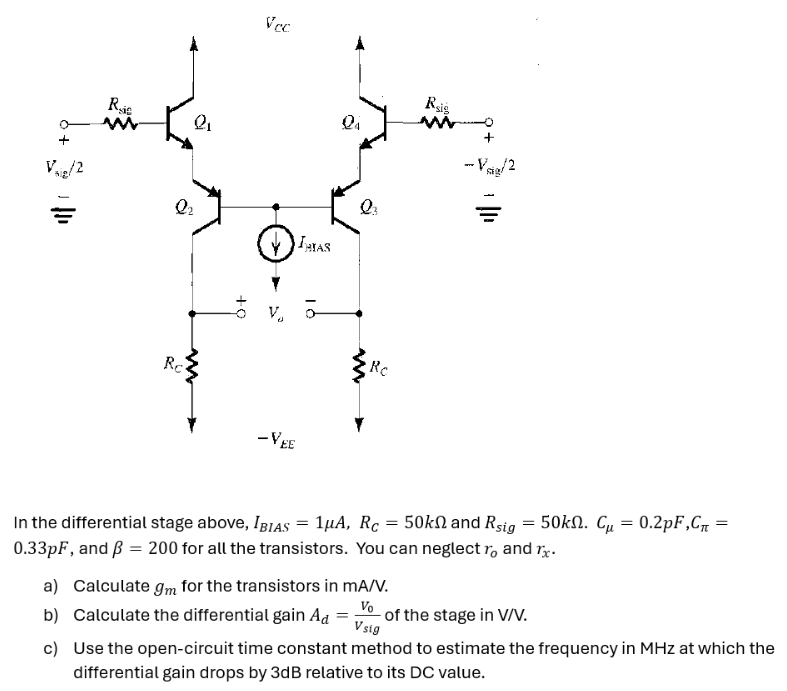In the differential stage above, IBIAS = 1 μA, RC = 50 kΩ and Rsig = 50 kΩ. Cμ = 0.2 pF, Cπ = 0.33 pF, and β = 200 for all the transistors. You can neglect ro and rx. a) Calculate gm for the transistors in mA/V. b) Calculate the differential gain Ad = V0 Vsig of the stage in V/V. c) Use the open-circuit time constant method to estimate the frequency in MHz at which the differential gain drops by 3 dB relative to its DC value.
